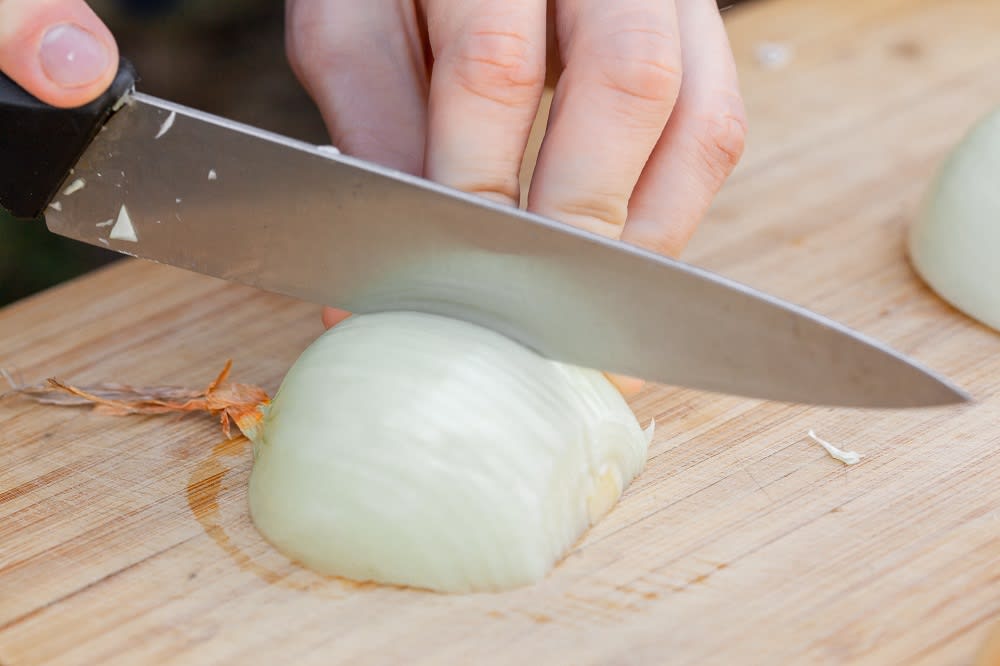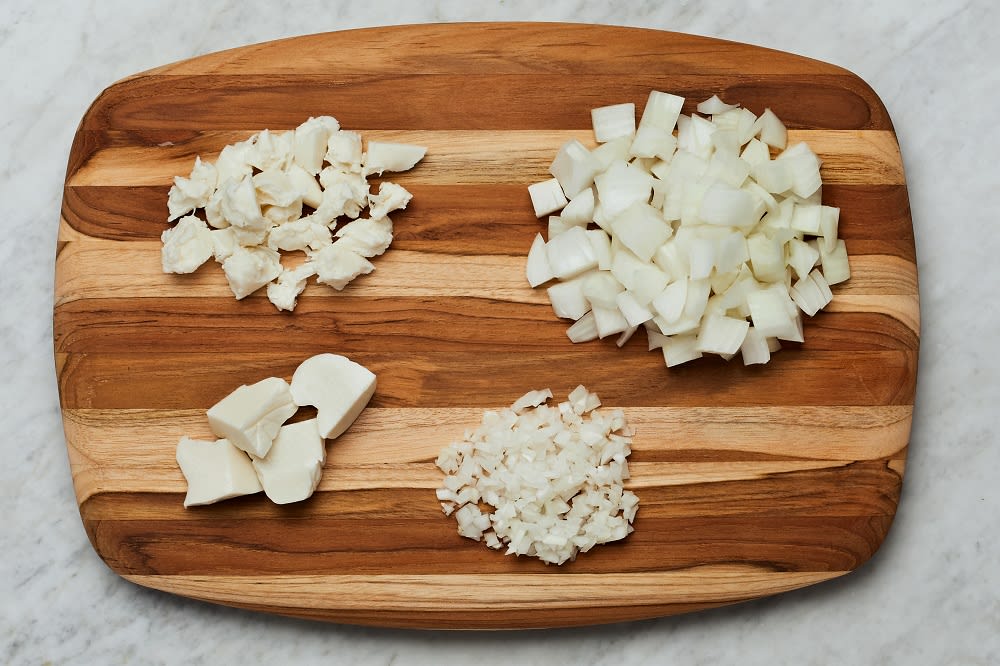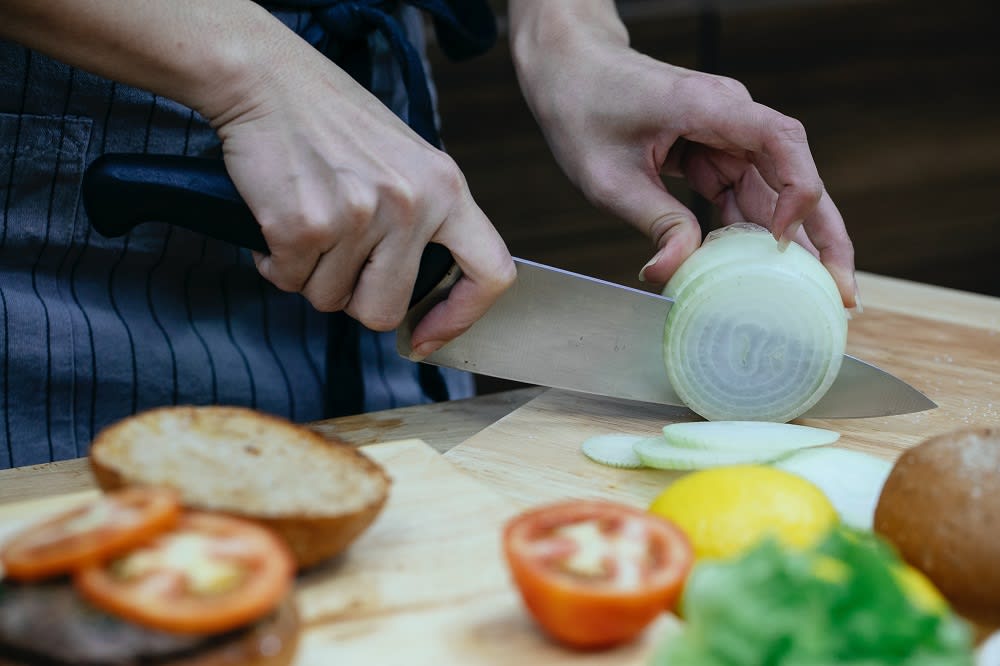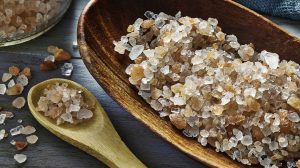Learn How to Cut an Onion Like a Pro
Onions are the backbone of thousands of savory dishes, from chili to marinara to salsa to soup. They’re also one-third of the holy trinity known as mirepoix (celery, carrots, and onions), which is used to add flavor and aroma to both restaurant and home-cooked meals. Given how often they appear in recipes, knowing how to chop an onion will make you a stronger cook right out of the gate.
But before you can begin chopping, it’s essential to know how to pick a good onion. Whether you’re working with white, yellow, red (sometimes called purple), sweet/Vidalia onions, or even shallots—a close cousin of the onion—start by picking firm, fully intact bulbs with tight skin, which indicates freshness (the more flaky and papery the skin, the longer it’s been hanging around).

The Basic Steps: How to Cut an Onion
Let’s begin by learning the basics of cutting onions:
- Identify the top end of the onion (opposite the root end, which tends to look “hairy”). Using a sharp chef’s knife, slice off about an inch of the top end, creating a flat side. Then, for stability, turn the onion onto this flat end and slice it in half vertically. (Tip: If you’re only using half of the onion, leave the skin on and wrap what you’re not using in plastic wrap.)
- Peel off the papery layers and discard.
- Lay the onion halves on their larger cut sides. Then, with your free hand holding the onion, and keeping the palm of your hand flat and the fingers curled inward, slice the onion holding the knife parallel to the cutting board. You’ll be slicing toward the root end, but don’t cut all the way through. Keeping the root end intact makes chopping easier. Repeat, creating three to five even rows of horizontal slices.
- Last, rotate the onion and slice holding the knife perpendicular to the cutting board, creating little squares of onion. Discard the root end and repeat with the remaining half of the onion. The closer together the horizontal and vertical cuts are, the smaller the squares will be.

The Difference Between Chopping, Dicing, and Mincing—and When to Do Each
Chopping, dicing, or mincing will determine the size of the onion squares you create —and will affect the texture and flavor of your final dish. Onion sizes and language are not standardized across recipes, so know that there is some leeway here (if a certain size is imperative, the recipe writer will usually indicate a specific size).
In general, a chop yields larger squares of onion, which are appropriate for soups and sautés in which you don’t mind seeing and tasting the onion. Dicing creates slightly smaller pieces than a chop (and is sometimes called a small chop). When in doubt, a dice will work in most recipes. And, finally, mincing renders the smallest pieces of onion —useful in fine cuisine, or anytime you want the onion to disappear into a dish. Mincing is also ideal for a salsa or pico de gallo in which the onion will be consumed raw.

Why Do Onions Make You Cry? (And How to Cut an Onion Without Crying)
When sliced, onions emit a compound that gets into the air and can irritate the nerves around the eyes, causing you to tear up. (Science types, you can refer to this as “syn-propanethial-S-oxide.”)
Knowing why onions make you cry doesn’t help you avoid it—but you have a few options here. Got a little time? Peel and wash the onions, then place them in resealable bags and allow them to chill in the freezer for 10-15 minutes. Chilling onions before slicing can slow down the chemical chain reaction, allowing you to finish chopping before the tears flow. Also, always be sure to chop an onion with a sharp knife; using a dull tool mashes rather than cuts the onion, releasing more of the tear-inducing compounds. Finally, use protective eyewear. If you wear contact lenses, you’re in luck, as they provide a good barrier to irritation. If you don’t, consider kitchen goggles (ski, swim, or safety goggles work too). Alas, regular glasses provide some protection, but not quite as much as the aforementioned options.
Can You Just Cut Off the Rotten Part of an Onion?
Have an onion at home that’s bruised or starting to soften? It’s still safe to eat and cook with the firm portions. Peel away any soft, smelly, or brown layers of the onion and rinse. Cut out around the rotting piece, leaving generous edges of healthy onion, and continue chopping in the manner described above.









